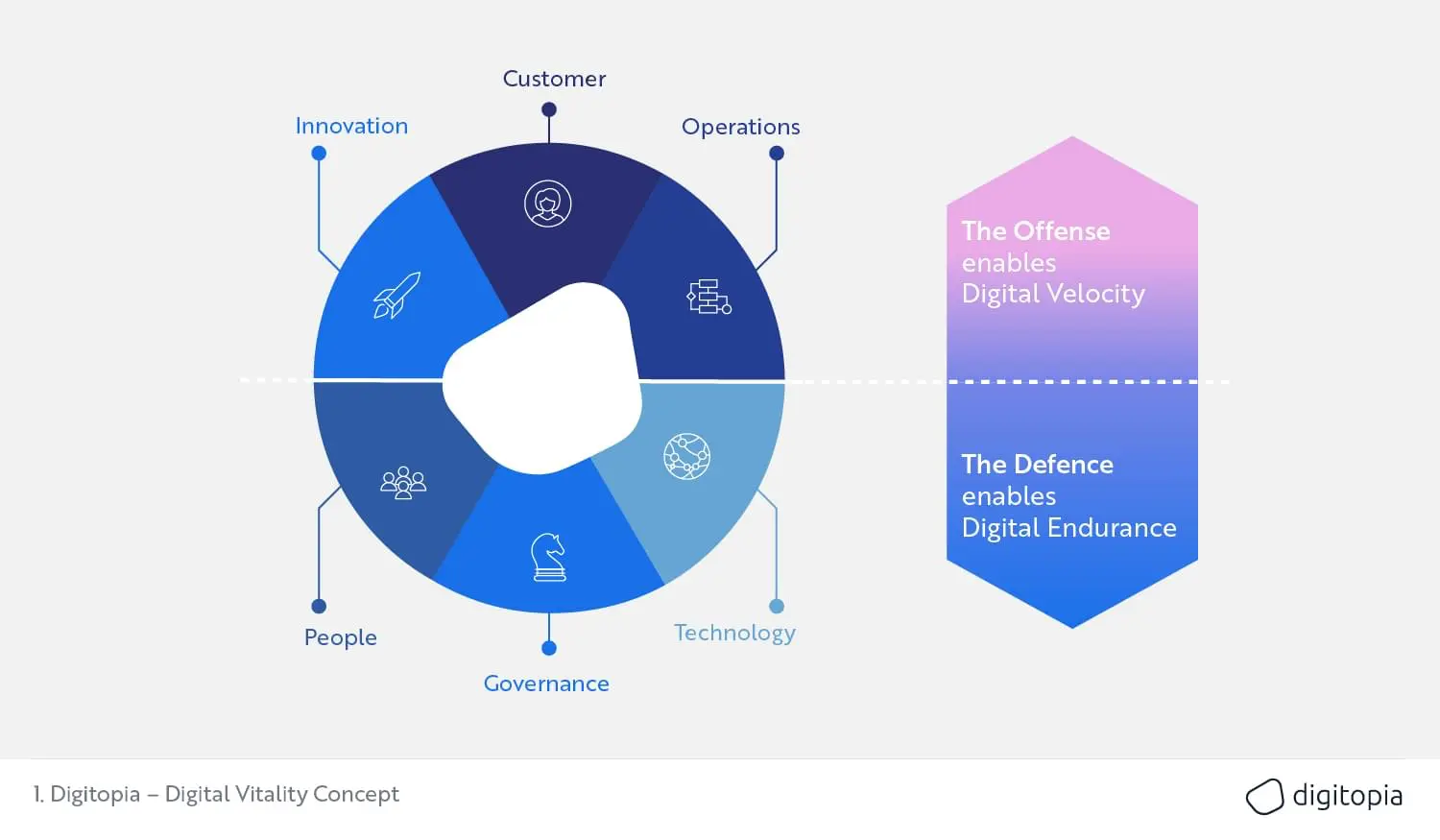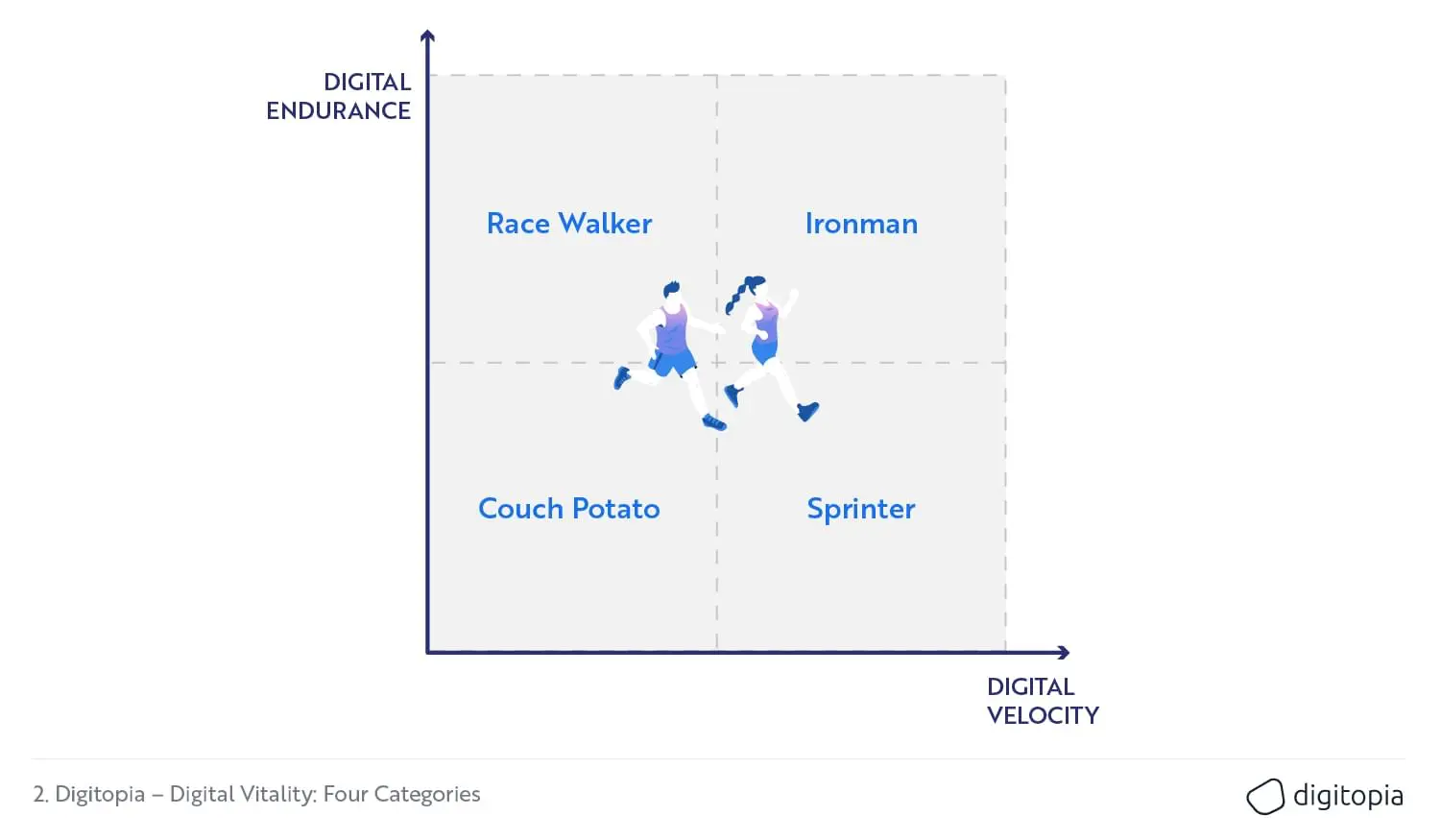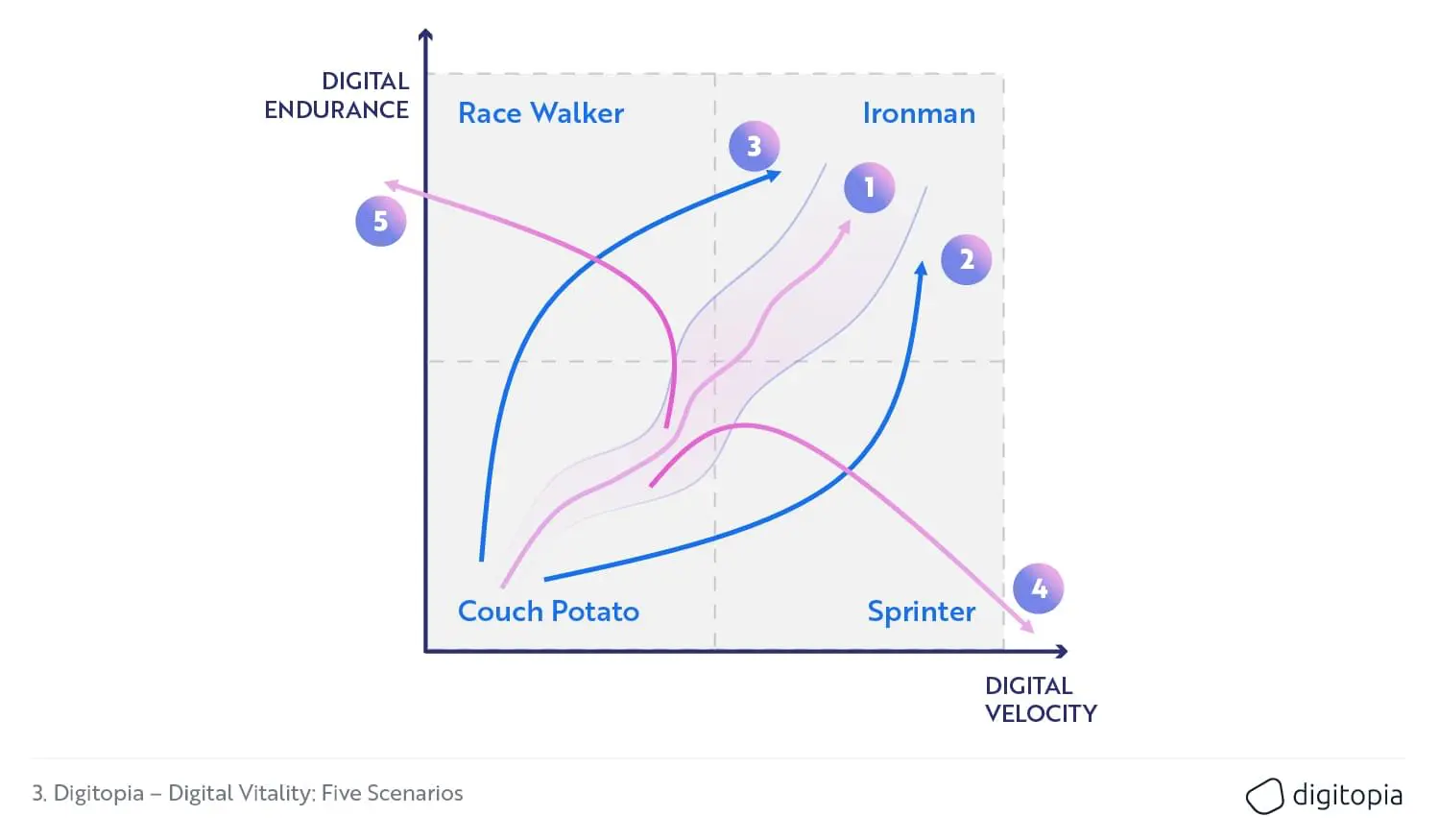
Charles Darwin explained evolution with “natural selection” and “survival of the fittest”, where intuitively we might assume the fastest or strongest will survive, when in fact those most able to adapt to change will survive. This is true for businesses as well.
Never before in human history has there been such rapid, simultaneous change.
Scientific revolutions and business model innovation continually reshape the playing field, while shifting demographics, growing populations and climate change provide critical new challenges for us to overcome.
Since the invention of the semiconductor, the world made an acquaintance of the exponential. The evolution of chips developing from microchips to computers, to mobile phones, to the internet of things is unstoppable, linking every aspect of our lives together and creating vast quantities of data like never before. The internet has uplifted all of our devices, allowing them to become increasingly ‘smart’ and sophisticated through their connections.
The digital revolution is driving the biggest economical, societal, and even political change humanity has never experienced before. And this is just the beginning.
The automotive industry is transforming radically. Its future is digital. A great migration from a world of metal, plastics, glass, and textiles to one of the services, software, intelligence, and connectivity. With this change comes the need for a rebranding, with forward-thinking industry leaders referring to it as the ‘mobility services’ sector, broadening horizons significantly from automotive. These services include scooter providers, charging station chains, car sharing, and ride-hailing players. In this new world, we see how the fittest new entrants are taking over the industry. Tesla, Rivian, Lucid Motors, BYD, Nio, and many more are the new “kids on the block“. This is disruptive. This is radical. This is transformative.
The same is happening in the retail industry. As consumers become attuned to digital channels, brick and mortar retailers struggle to compete. Some players understand this change and try to adapt, while some visionaries strive to harness digital opportunities. Unfortunately, the majority lack the awareness, the capabilities, and the courage to change. Digital transformation is evolution, and natural selection is key to success as we have witnessed in skyrocketing number of bankruptcies in retail in recent years.
Fintech start-ups are redefining the world of banking. Banks are still strong, but for how long? Insurtech startups are reinventing the world of insurance, calling into question the need for the megalith insurers of the past. Robinhood is transforming stock trading, creating a buzz throughout the industry. While it remains to be seen whether these new innovations will be a permanent change, it is undeniable that they the talk of stakeholders throughout the financial services industry.
What is the secret sauce?
The short answer is digital. The not so short answer is digital superpowers, and how you apply them. Connectivity, intelligence, hyper-automation, end-to-end integration, design-enabled convenience, precision, and ultra-acceleration. When you make use of some of these digital superpowers, you can radically transform your business, your processes, the experiences you provide customers, and much more.
Customer experience, operations, and innovation are driving growth and margins. Borrowing from football, we call these dimensions “the offense” of your business. How you digitally improve them becomes your digital velocity.
Your people, your governance, and your technology are supporting your growth. We call these dimensions “the defence” of your business. The digital advancement of them becomes your digital endurance.

But how do you know where you are? How do you know how fast your digital velocity is? How do you know how strong your digital endurance is? Borrowing again from the football analogy, what are your strategy and tactics to win the game? How offensive do you want to play? How do you structure your defence to beat your opponent? Like in other sports statistics and analytics are key, and to answer these questions measurement, benchmarking and competitive analysis are critical. To be able to answer these questions, measurement, benchmarking, and competitive analysis are the keys. This is what we do with our “Digital Maturity Index” service.
There is a difference between fast and slow moving companies, even more so between endurant and weaker organisations. Fast companies gain a competitive edge by growing, innovating, and developing rapidly, but developing so quickly can be their downfall due to deficit foundations and systems required to support a large organisation. Endurant companies on the other hand may be strong enough to withstand the commercial storm but can suffer to adapt to change. So, what is the solution?
You must become an Ironman
Being both as fast and endurant as possible is the optimal solution, while also being flexible with your capabilities, pace, and surroundings. This extends beyond just the individual, but to an organisational level and potentially the entire ecosystem.
The chart below outlines four different business types, differentiated by their digital endurance and velocity… “Sprinters” are very fast. Remember Usain Bolt, the fastest human on earth. But he can run that pace only a few hundred meters, and just a few seconds. This carefully honed skillset enables Usain to overtake everybody else, but only in the short run.

On the other hand, “Race walkers” could walk for hours, even days. With their limitless endurance, they keep walking long after everybody has left, far longer than any rival. This is a very important capability, but alone will not help you win a race or become a superstar. In spite of that, these people are very fit, healthy and very endurant.
Then there are the Ironmen. The world’s most famous race is in Hawaii where these athletes must swim 4 km, cycle 180 km, and run a full marathon. They are very versatile, very endurant, and yet, very fast. The fittest and fastest are seen as the pinnacle of athleticism, with clear strengths over their peers.
Now let’s imagine a business. Very fast in their operations and customer service, and extremely innovative when it comes to new products, services, and business models. Great. But what about adapting the whole organisation? What about attracting the required talent? What about changing legacy systems? Sounds familiar? You must be fast in innovation and endurant in execution and change, at the same time. This will make you an ‘ironman’ business.
How to become an ironman?
There is an ideal route we call the “balanced path” in the middle of the chart below (#1). If you can increase your speed and improve your endurance at the same time, this is the fastest way to become an ironman.
This means you invest equally in quick wins and high return projects. Equally, you train people, advance culture, transform infrastructure, and take care of sustainability. In short, you have a healthy balance between short-term tangible gains and long-term intangible values. Prioritisation and portfolio management are critical, finding the balance between strict and flexible. Agile is a recommended approach.

Competition may necessitate the need for a faster approach, route #2 on the diagram. This requires accelerating execution first and developing endurance later. Failing to take care of corporate endurance may lead an organisation down route #4, taking them off-chart and out of business. The once super marketed Netflix rival Quibi is a great example for running out of breath, cash, and business.
Tesla is a good example for route #2. They are fast in execution, selling and marketing with corporate endurance building from behind, leading them beyond a magical valuation of 1 Trillion USD and giving them a power to establish basically anything they require.
Route #5 is the most famous path of former industry leaders. Kodak, Blockbuster, Nokia, and many more lost their way down this route having been very strong corporates with high endurance, but failed to transform, adopt and execute quickly. Clearly, endurance alone is not adequate for success, and even being the market leader is not sufficient. “It is not the strongest of the species that survives, nor the most intelligent. It is the one most adaptable to change.” Charles Darwin must be remembered in business as well.
Conclusion: Stay On Course!
When Alice in Wonderland meets the Cheshire cat in the forest, she asks for the way. The cat replies that it depends on where she wants to go. In business, you can’t just wonder around. You must know where you are, where you want to go, and what it takes to get there. “Stay on course” means you are in the know.
The moment you use the word “course”, it implies many things at the same time:
- First, you must have set a certain target, which basically is your vision.
- Second, you try to reach that target in a certain time, which usually is called a roadmap.
- Third, you know how to get there, which is referred to as strategy.
- Fourth, you are aware of your capabilities, which means you know your maturity.
- Fifth, you monitor your progress, which indicates you have a dashboard.
Business is unmerciful. Competition is brutal. Uncertainty hurts. Bad news: this will get even worse. Good news: Digital superpowers are your best friends. Embrace them, leverage them, benefit from them, and you will succeed. Transformation is happening all around us. Good luck.

